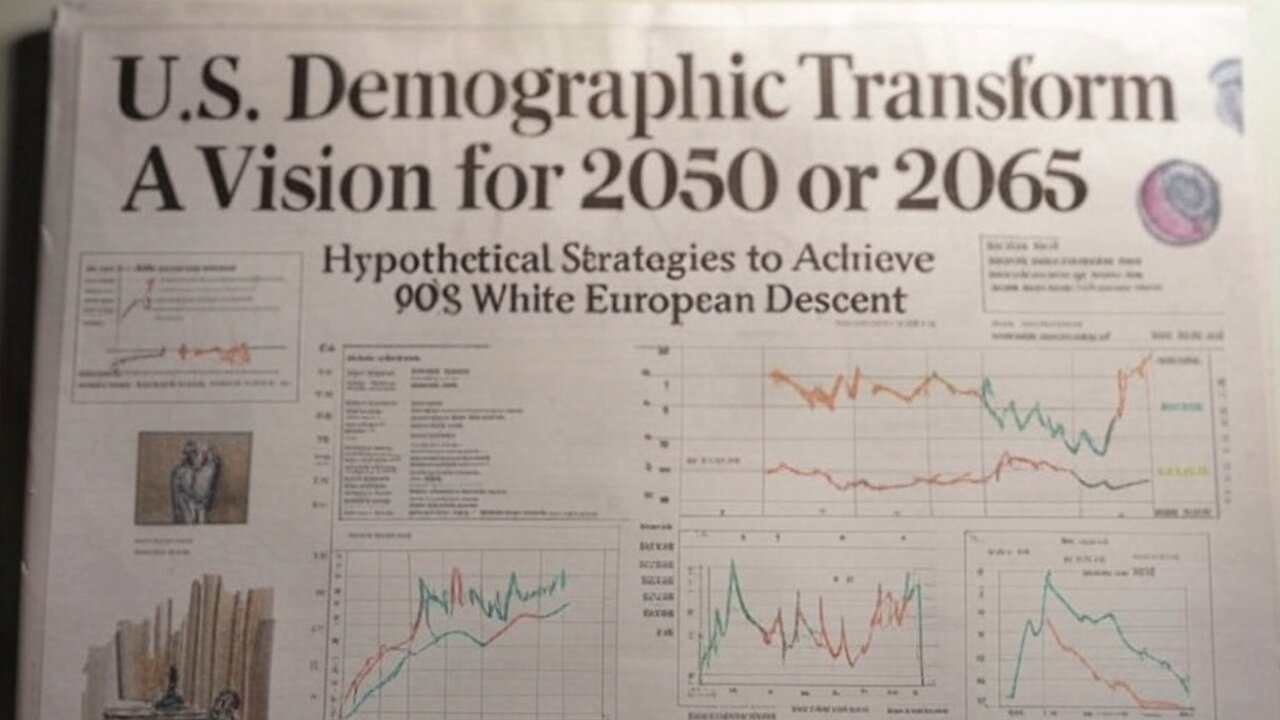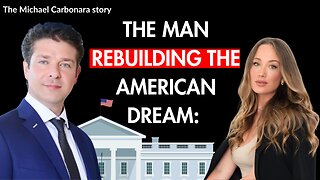Premium Only Content

Exploring a Future U.S. Population Shift to 250 Million with a Dominant European Heritage by 2065
Hypothetical Transformation of U.S. Population and Demographics to 250 Million with 90% White European Descent by 2050 or 2065 (Theoretical Policy Option Analysis)
The idea envisions a future where the U.S. population decreases significantly from its current size and reshapes its demographic profile to emphasize a majority of European-descended individuals by mid-century or slightly later. Starting from a present-day population that’s notably larger and more diverse than it was decades ago, the goal is to reduce the total number of people while increasing the proportion of one ancestral group to a dominant level, leaving a small share of others. This speculative scenario considers removing specific groups—such as long-standing minorities, recent immigrants and their families, refugees, and new arrivals from certain regions—while allowing flexibility with earlier arrivals.
The current U.S. population reflects a mix of ancestries, with one group holding a majority, though less dominant than in the past, alongside significant minority communities. The targeted reduction would involve shrinking the overall population and adjusting this balance, boosting the majority group’s presence while sharply cutting others. This could include individuals of mixed heritage, adopted children, or unique family structures within the majority, with the remaining minority share reflecting similar diversity.
Several strategies are explored to achieve this shift. One approach involves reviving old laws that once restricted citizenship to a specific group, potentially pushing out those who don’t qualify over time. Another method uses existing regulations—like those addressing public behavior or health—to encourage departures without new legislation. Expanding immigration enforcement could also play a role, deporting certain groups while halting new entries and adjusting birth patterns to favor the majority. Offering financial incentives, such as help selling assets and travel assistance, might encourage voluntary exits to other countries, reducing the population gradually. Reinterpreting or removing civil rights protections could empower communities to exclude others legally, while grassroots efforts—like denying services or social pressure—might amplify the effect. More extreme, hypothetical ideas include covert actions or even conflict, though these are presented as thought experiments, not endorsements.
The timeline matters. A faster pace by mid-century demands swift, intense efforts—relocation, community actions, and legal changes—risking disruption. A longer horizon, stretching a decade or two further, allows a steadier approach, spreading out the transformation with less immediate strain. Compared to the past, when the population was smaller and less diverse, this vision exceeds that era’s majority dominance while falling short of future projections that anticipate even greater growth and variety. Over a century, it reverses expansion into a deliberate cut, landing between historical simplicity and forecasted complexity.
The implications are broad. The majority group’s growth could include diverse family ties, while the remaining minority might mirror that complexity. A rapid shift risks instability; a slower one offers flexibility. Legal challenges, economic reliance on a varied workforce, and social pushback loom large, dwarfing past efforts at control. Voluntary relocation—offering travel and asset support—softens the process, while community-driven exclusion adds momentum. This exploration, rooted in current trends and historical context, presents a hypothetical reimagining of the nation’s identity, not a call to action, highlighting the scale and stakes of such a change.
Read the full essay and further analysis at Real free News
#FutureDemographics #PopulationShift #USVision #HeritageFocus #SpeculativeChange
-
 2:51:50
2:51:50
Laura Loomer
4 hours agoEP156: Trump Sounds The Alarm On The Nigerian Christian Genocide
27.9K27 -
 1:11:27
1:11:27
Flyover Conservatives
22 hours agoDAVID GREEN: “God Owns It All”: How Hobby Lobby Thinks About Money, Time & Eternity w/ Bill High | FOC Show
16K2 -
 LIVE
LIVE
DLDAfterDark
2 hours ago $0.96 earnedThe Armory - God, Guns, and Gear - A Conversation About Preparedness
341 watching -
 23:42
23:42
Robbi On The Record
3 hours ago $1.86 earnedMAGA 2.0? BTS of Michael Carbonara for Congress
18.7K3 -
 LIVE
LIVE
Drew Hernandez
22 hours agoSHAPIRO COOKS HIMSELF: SAYS YOU DON'T DESERVE TO LIVE WHERE YOU GREW UP?
957 watching -
 1:59:26
1:59:26
Barry Cunningham
4 hours agoLIVE WATCH PARTY: J.D. VANCE ON THE SEAN HANNITY SHOW!
26.4K16 -
 2:11:15
2:11:15
megimu32
3 hours agoOFF THE SUBJECT: Judging Strangers on Reddit 😭 PLUS! Fortnite Chaos!
21.4K5 -
 2:53:16
2:53:16
Mally_Mouse
3 days ago🎮 Throwback Thursday! Let's Play: Stardew Valley pt. 32
31.4K1 -
 28:25
28:25
ThisIsDeLaCruz
12 hours ago $2.44 earnedInside the Sphere Part 2: Kenny Chesney’s Vegas Stage Revealed
13.5K -
 LIVE
LIVE
Lofi Girl
2 years agoSynthwave Radio 🌌 - beats to chill/game to
166 watching